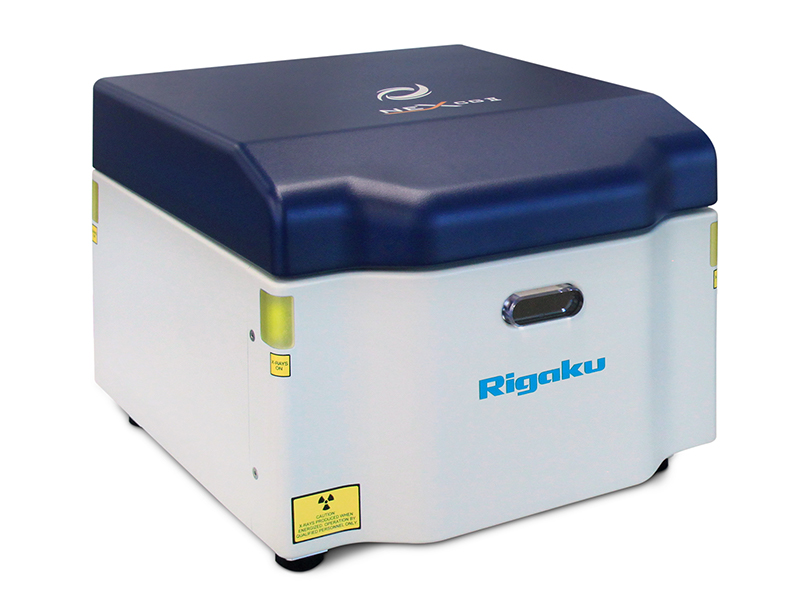Analysis of Air Filters - U.S. EPA Sensitivity

Scope
The analysis of air filters in compliance with instrument sensitivity as outlined by U.S. EPA method IO-3.3 (1999) is demonstrated using NEX CG II EDXRF analyzer.
Background
In the 1970s, the United States created the Clean Air Act, setting standards to regulate emission of pollutants that "endanger public health and welfare" with oversight by the U.S. Environmental Protection Agency (EPA). In the late 1990s, the EPA issued method IO-3.3 detailing the sensitivity required by EDXRF analyzers for measuring the elemental composition of air filters. To meet these testing requirements, Rigaku offers NEX CG II, a 50 W indirect excitation EDXRF system using secondary targets and polarization in full 90° Cartesian Geometry for superior sensitivity and analysis of elemental particulate matter on air filters.
 Model: NEX CG II series
Model: NEX CG II series
U.S. EPA Method IO-3.3 sensitivity compliance
Sensitivity compliance is demonstrated using Nuclepore® filters and empirical calibration using single element standards. Measurement times can be adjusted for particular subsets of elements of interest or to meet requirements for different filter materials such as Teflon®.
| Element | Line | EPA IO-3.3 1σ MDL (ng/cm²) | Secondary target |
| Na | Kα | 17.4 | RX9 Polarizer |
| Mg | Kα | 7.9 | |
| Al | Kα | 46.7 | |
| Si | Kα | 21.2 | |
| P | Kα | 4.1 | |
| S | Kα | 6.9 | |
| Cl | Kα | 5.6 | |
| Y | Lα | 1.1 | |
| Zr | Lα | 1.1 | |
| Mo | Lα | 1.5 | |
| Rh | Lα | 26.5 | Cu Target |
| Pd | Lα | 18.7 | |
| Ag | Lα | 20.3 | |
| Cd | Lα | 19.2 | |
| Sn | Lα | 31.5 | |
| Sb | Lα | 26.7 | |
| Te | Lα | 27.6 | |
| I | Lα | 34.4 | |
| Cs | Lα | 50.9 | |
| Ba | Lα | 58.3 | |
| La | Lα | 68.9 | |
| K | Kα | 5.6 | |
| Ca | Kα | 8.7 | |
| Sc | Kα | 1.3 | |
| Ti | Kα | 18.7 | |
| V | Kα | 5.5 | |
| Cr | Kα | 3.0 | |
| Mn | Kα | 0.8 | |
| Fe | Kα | 1.0 | |
| Co | Kα | 0.4 | |
| Ni | Kα | 0.7 | Mo Target |
| Cu | Kα | 0.8 | |
| Zn | Kα | 1.1 | |
| Ga | Kα | 1.5 | |
| Ge | Kα | 1.0 | |
| As | Kα | 0.9 | |
| Se | Kα | 0.6 | |
| Br | Kα | 0.7 | |
| Rb | Kα | 0.7 | |
| Sr | Kα | 0.9 | |
| W | Lα | 3.3 | |
| Au | Lα | 1.5 | |
| Hg | Lα | 1.5 | |
| Pb | Lα | 1.4 |
Discussion
NEX CG II meets the EPA sensitivity requirements for EDXRF analyzers. Actual air filter samples being tested will contain several elements rather than one element per filter. The subset of elements to be tested depends on each testing site’s needs, for example, testing urban or rural air, air in an industrial area, or other specific sites to be tested. Typically, air filter samples being tested will have multiple elements in the loading at levels in the µg/cm² ranges.
When using NEX CG II, the air filters are measured using Rigaku RPF-SQX Fundamental Parameters for excellent semi-quant concentration results and can be made fully quantitative, optimizing accuracy using the Matching Library section of RPF-SQX.
The operator can easily build a specific Matching Library for the elements of interest by measuring only one multi-element air filter sample with certified loading values. In this way, the Matching Library tunes the analyzer to the type of filter being tested and the certified referee values.
The QuantEZ® Filter template automatically compensates for different filter material, and measurement times can be adjusted for the subsets of elements being tested to optimize daily sample throughput.
Conclusion
The Rigaku NEX CG II combines Cartesian Geometry indirect excitation with secondary targets, polarization targets, and a high-performance large- area SDD detector to yield the optimum performance for the analysis of air filters. NEX CG II can be used to comply with EPA IO-3.3 sensitivity requirements. The NEX QuantEZ® software is simple to use yet powerful, making NEX CG II an excellent tool for non-technical operators and researchers alike.

Contact Us
Whether you're interested in getting a quote, want a demo, need technical support, or simply have a question, we're here to help.
